Newport (Jackson County, AR)
Introduction
Text-to-speech Audio
When first coming into Newport, AR on Highway 367 a person will enter on the street called main street but if a person looks all around them they will see older building surrounding the area, and the reason why is because this was the original location of thriving railroad era of Newport, AR before and after it became the county seat of Jackson County, AR. Newport even in the twenty-first century is considered the city center for Jackson County. When the railroad was built through Newport and the county seat was switch to the city, Newport became a booming metropolis. People came from all over the country because the depot in Newport for not only entertainment but for businesses as well. Due to the expansion of Newport being so quick and large, crime would break out everywhere prompting the county to set up the first official justice system in Jackson County. One of the most well-known African American men would come out of this town established a community to help out his fellow people to get off their feet during the Jim Crow Era, and World War II would bring even more commercial business and entertainment into the city. Newport in the twenty-first century is still a community of people who strive to help each other in every way they can.
Images
ASU-Newport, a two-year college and picture was taken in 2009
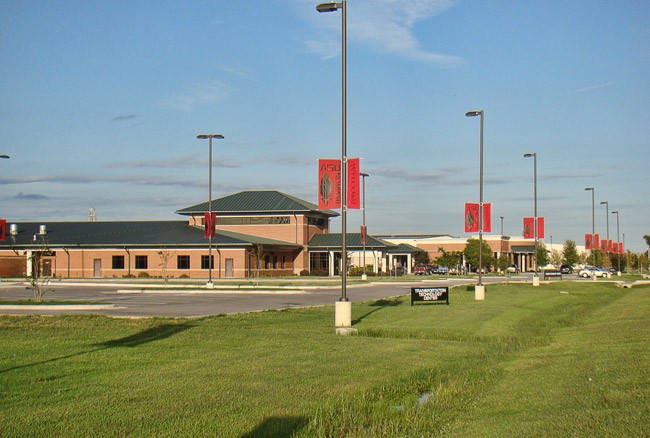
Button Factory that existed in Newport.
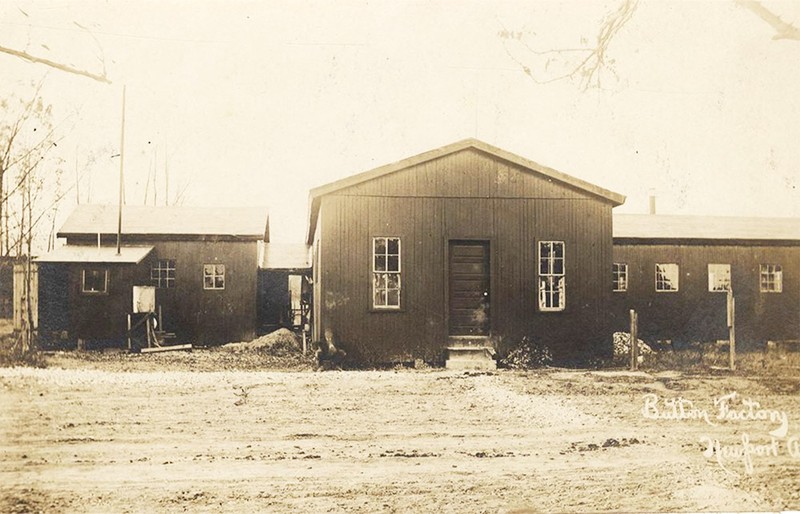
First National Bank of Newport around 1947
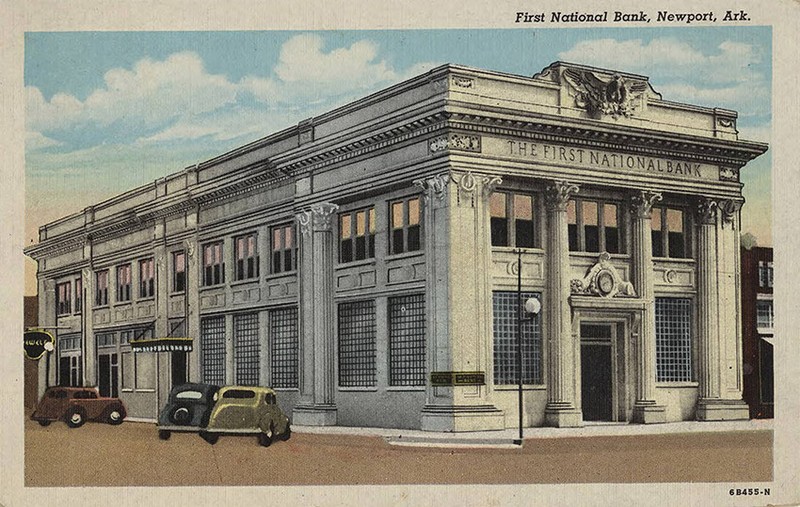
Hazel Hotel located in Newport advertised on a postcard
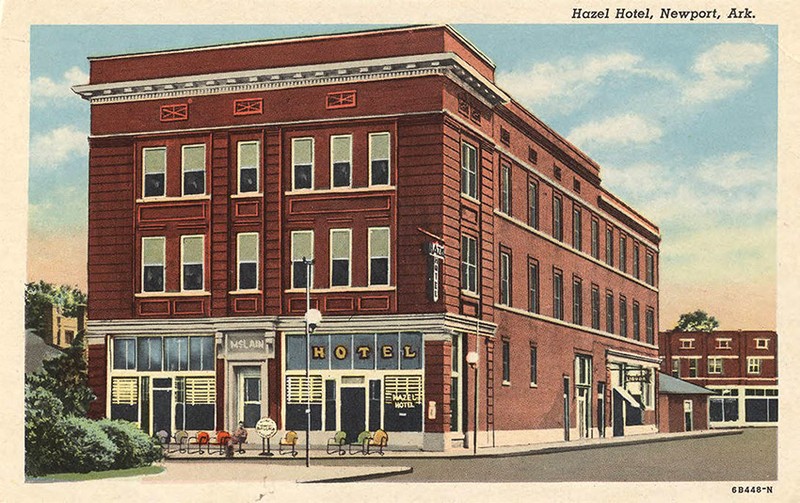
Jackson County Courthouse
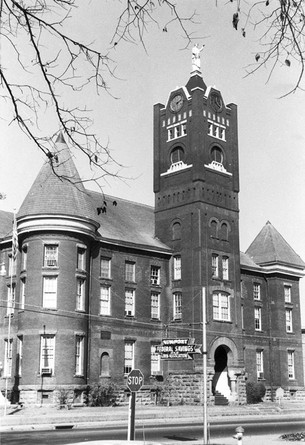
Newport Bridge/Blue Bridge Photo taken between 1928-1933
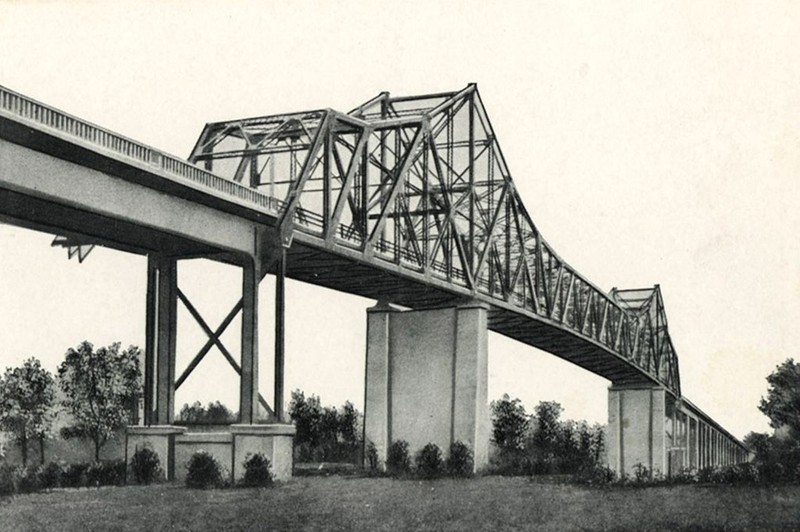
Newport African American High School taken between 1950-1955
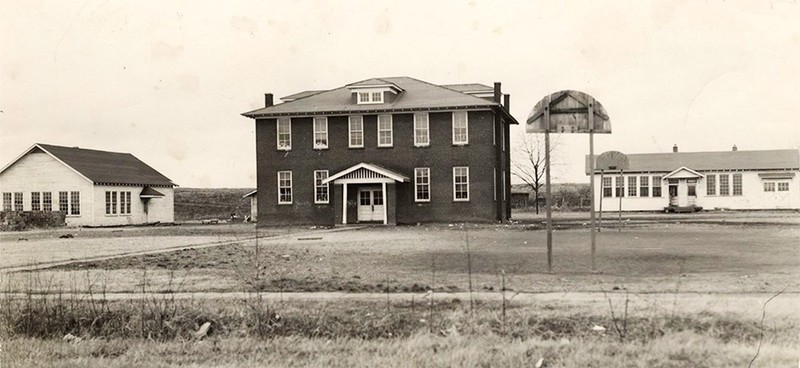
Newport Train Depot
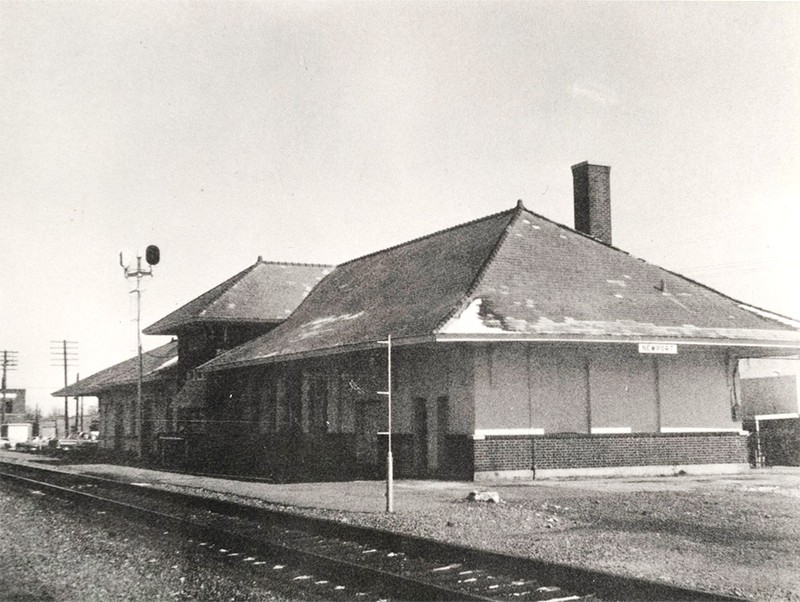
Map of the Newport Fire from 1926
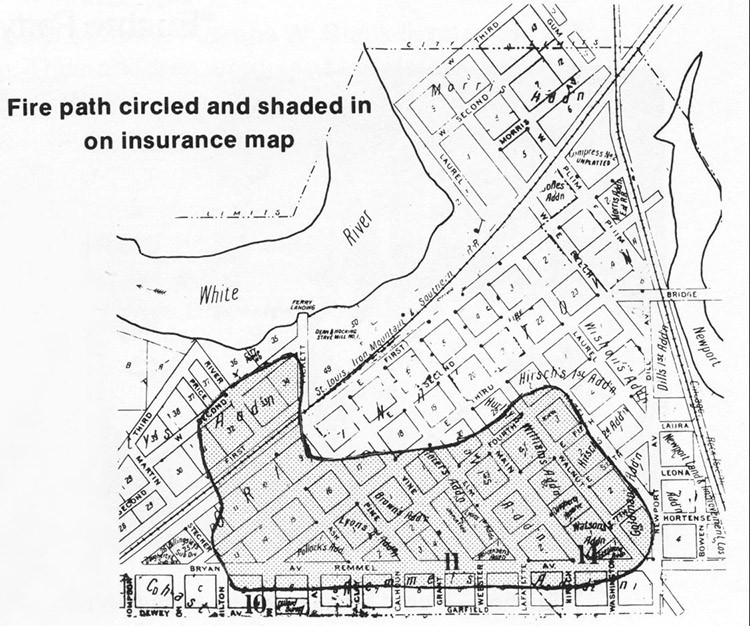
Jackson County's Radio Station taken March 2016
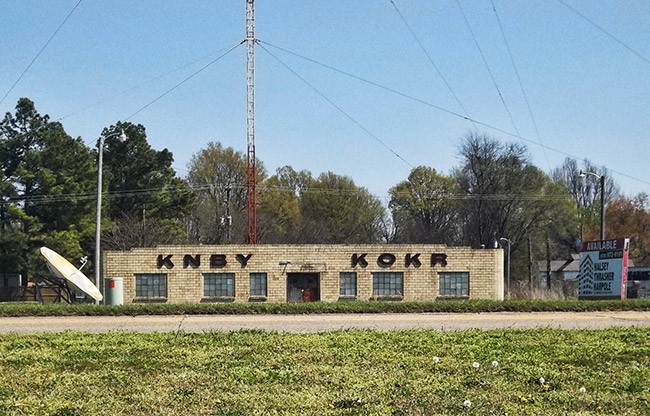
Backstory and Context
Text-to-speech Audio
Newport was located on a bluff on the left bank of the White River and due to this situation, it was protected from the frequent flooding that occurred in Jacksonport at this time. The 1870s and 1880s saw a mass influx of residents from the older towns such as Jacksonport and by 1892 the county seat had been moved to Newport. Due to all this Jacksonport became a virtual ghost town. Overtime Newport became the commercial marketing town in northeast Arkansas. With the advent of railroads cars and steamboats several millions of dollars of lumber and cotton out of the virgin hardwood forests and newly cleared fertile lands developing in the deep Southern ways of life. With the building of the new Jackson County Courthouse in 1892 brought Newport into the center of a bustling commercial, financial, social, and religious life producing new banks, churches, businesses, and schools. By the 1890s the population of Newport had almost doubled in size resulting in the building of many beautiful houses springing up expanding from its original city limits.
A consequence of the growing population in Newport brought a lot of lawlessness, and to solve this matter Newport built its very first Jackson County Jail, a stone Gothic Revival building, right next to the new county courthouse which would be site of multiply hangings in Newport from the Jackson County region such as the Olyphant Train Robbery. By the 1900 one former resident of Newport Neill Phillips had stated that Newport was not only full of townspeople but also with a large traveling population ranging from drummers, cotton buyers, people who brought trade and pearl fishing, gamblers, and because it was a railroad town traveling performers. He also noted that on Front Street the business district being full of wagons packed with cotton bales, stores and sidewalks packed with country people, whites and blacks doing business and enjoying the excitement of town life.
During the 1910s Newport was growing and thriving even more and though few soldiers from Jackson County went to fight in World War I the never really affected the town. Over the next few years Newport would prosper from lumber being from the virgin timbers resulting in the continued farming of land for agricultural purposes adding the economy of Newport. Flooding in Newport would also be a similar problem like in Jacksonport happening twice during this decade with streets in Newport looking like lakes, but unlike Jacksonport most of the buildings in Newport were better prepared for the flooding by building their structures’ first floor about five to six feet higher than the sounding yards. For example, the first Newport High School building opened in 1912 was constructed on these plans. The Newport flood of 1915 though covered the railroad tracks with 12 feet of water resulting in according to the Associated Press in an article titled “Newport Ark. Is Still Completely Isolated. 4,000 Refugees from that Place Are Crowded into Hotels at Little Rock,” and then another flood in 1916 would cause Newport citizens to investigate a $500,000 tax-funded levee to be built around the town. With the improvement of roads and bridges throughout the county for farm products could be brought to places in county such as Newport to be transported by trains. When America had official entered World War I the increased pricing on cotton resulted in local farmers taking full advantage of it to make a bigger profit crowding the local streets of Newport with wagons. Farmers would continue to profit from this increase in cotton prices until the stock market crash of the late 1910s.
Along with the beginning of the Great Depression during the mid-1900s more tragedy would strike Newport in devasting turmoil among the citizens. Not only did Newport have to face a flood in 1916 but a destructive fire broke out in the center of town devasting the community. Named The Great Fire of Newport by the old-timers of the county started on a windy March day following the stave mill that caught on fire in the northwest part of Newport next to the river. Due to the high winds fragments of burning wood was spread out all over the residential area of Newport catching the roofs of these homes on fire. Because of how fast the fire was spreading through the residential area firefighters became overwhelmed and over 280 homes and buildings were burned to the ground as a result of this fire, but Newport had a strong community of residents and they managed to recovered quickly rebuilding the homes within six months. The Mississippi River Flood of 1927 would also flood Newport and surrounding towns of Jackson County but it wasn’t as devasting here as it was in the lower Mississippi areas of southeast Arkansas. Newport recovered quickly once floodwaters receded and buildings were replaced. During this time as well, entrepreneurs were clearing more acres of virgin hardwood and draining the nearby swamps resulting in the elimination of illnesses and fevers that had plagued the area for many years. Growth of the agricultural farming continued despite the price of cotton crashing along with the beginning of the depression, but by the 1930s with the failure of banks and high unemployment rate Jackson County would be impacted.
The 1930s and 1940s would see struggles and new changes happen allover Jackson County but especially in Newport. One major construction happened in Newport in 1930 when the very first river bridge was built across the White River named the Newport Bridge and what locals call nowadays the Blue Bridge. Original called the Southwest Trail that the US Army used as roadbed for a military road changed to Highway 67 now AR-367 brought new possibilities stemming from this new form of transportation across the Blue Bridge. Newport two major corporations develop during the 1930s: first mussels from the White River became a commodity because of their pearls and plugs that were used to make buttons, creating 76,000 pounds of mussel shells a year accumulating 1,000 shell fishers to dive for them, and second was the production of rice because it was less labor-intensive than King Cotton and is still a major economic value to the county in the twenty-first century. One famous figure comes out of this era named Pickens Black Sr., a freed slave who moved to Jackson County in the 1870s who worked on the railroad buying up land that loggers were clearing amassing 8,000 acres creating the unincorporated town of Blackville established with churches, cotton gins, homes, school, and retail businesses for his family and fellow African Americans. Once World War II broke out Newport would greatly benefit from it because the Army would establish a flight-training facility bringing with it bringing numerous soldiers increasing the population overnight. The 1940s seen an industrial change for Newport with new plants and factories bringing new jobs for people in the county along with the advent of farming equipment to help the agricultural production in the area.
After the 1940s Jackson County would be listed in 1951 as one of the wealthiest counties in Arkansas with its production of rich, cotton, and soybeans. Another major figure would like in the 1930s come out of the 1950s era as well, his name Same Walton. Walton would become president of the chamber of commerce in Newport, supporting and encouraging industries to plant their businesses on the airfield in Newport, but despite his hard work in Newport he was never allowed to develop his new business Wal-Mart Stores Inc in this area instead establishing its headquarters in Blytheville, Arkansas where it still sits in the twenty-first century. Similarly, to Jacksonport the local Rural Electrical Cooperative, Famers Electric began to sponsor an annual Famers Day like Portfest in Newport that consisted of live music, demonstrations of new household and farming machinery, political speeches, raffles, and at its heyday it attracted 10,000 visitors in one setting. The 1960s and 1970s in Newport seen the integration of schools when African Americans were moved out of their segregated building into the predominantly all white schools such as Newport High School. During the 1970s the war in Vietnam caused citizens to become more mindful of the conflict because of the numerous losses of soldiers that returning home. By 1972 the first ever mall would be open in Newport called the Village Mall with Sam Walton opening the first Wal-Mart in Jackson County, and as residents began to develop different areas of Newport new stores began to open such as Kroger. With the opening of the Missouri Pacific Railroad a passenger service train brought businesses to the town even though the 1960s, but with advent of the motor vehicle this would no only exist after the 1970s. At the same time the automobile came about farmers and businesses stopped using the river commercially, Front Street fish markets began to close once commercial fishing in the White and Black Rivers stopped because fresh fish was being brought to supermarkets and catfish pounds began to spring up everywhere.
Due to this combination Newport’s economy began to decline even more through the rest of the twentieth century and does still decline into the twenty-first century even though citizens in Newport continue to support the community. Newport today has the Jackson County Courthouse, three grocery stores, a restaurants, a few retail businesses, Newport and Jackson County Police Department, two parks, gas stations all over town, Elementary, Middle, and High Schools, and one two-year college Arkansas State University of Newport.
Cite This Entry
Johnson, Lezlie. "Newport (Jackson County, AR)." Clio: Your Guide to History. May 5, 2023. Accessed April 22, 2025. https://theclio.com/entry/167577
Sources
Watson, Tim. Watson, Betsy Jacoway. Images of America: Newport and Jackson County. Charleston, South Carolina. Arcadia Publishing, 2016.
Lancaster, Guy. ASU-Newport, Encyclopedia of Arkansas. Accessed May 1st, 2023. https://encyclopediaofarkansas.net/media/asu-newport-8946/.
Butler Center for Arkansas Studies, Central Arkansas Library System. Button Factory, Encyclopedia of Arkansas. Accessed May 1st, 2023. https://encyclopediaofarkansas.net/media/button-factory-18141/.
Butler Center for Arkansas Studies, Central Arkansas Library System. First National Bank, Encyclopedia of Arkansas. Accessed May 1st, 2023. https://encyclopediaofarkansas.net/media/first-national-bank-17713/.
Butler Center for Arkansas Studies, Central Arkansas Library System. Hazel Hotel, Encyclopedia of Arkansas. Accessed May 1st, 2023. https://encyclopediaofarkansas.net/media/hazel-hotel-17853/.
Gill, John. Jackson County Courthouse, Encyclopedia of Arkansas. Accessed May 1st, 2023. https://encyclopediaofarkansas.net/media/jackson-county-courthouse-7220/.
Butler Center for Arkansas Studies, Central Arkansas Library System. Newport Bridge, Encyclopedia of Arkansas . Accessed May 1st, 2023. https://encyclopediaofarkansas.net/media/newport-bridge-18378/.
Butler Center for Arkansas Studies, Central Arkansas Library System. Newport Colored High School, Encyclopedia of Arkansas . Accessed May 1st, 2023. https://encyclopediaofarkansas.net/media/newport-colored-high-school-18143/.
Butler Center for Arkansas Studies, Central Arkansas Library System. Newport Depot, Encyclopedia of Arkansas. Accessed May 1st, 2023. https://encyclopediaofarkansas.net/media/newport-depot-18090/.
Jackson County Historical Society. Newport Fire Map, Encyclopedia of Arkansas. Accessed May 1st, 2023. https://encyclopediaofarkansas.net/media/newport-fire-map-15103/.
Smith, James Tiny. Radio Station KNBY, Encyclopedia of Arkansas. Accessed May 1st, 2023. https://encyclopediaofarkansas.net/media/radio-station-knby-11309/.
Photo by: Guy Lancaster, courtesy of Encyclopedia of Arkansas
Photo By: Butler Center for Arkansas Studies, Central Arkansas Library System, courtesy of Encyclopedia of Arkansas
Photo by: Butler Center for Arkansas Studies, Central Arkansas Library System, courtesy of Encyclopedia of Arkansas
Photo by: Butler Center for Arkansas Studies, Central Arkansas Library System, courtesy of Encyclopedia of Arkansas
Photo by: John Gill, courtesy of Encyclopedia of Arkansas
Photo by: Butler Center for Arkansas Studies, Central Arkansas Library System, courtesy of Encyclopedia of Arkansas
Photo by: Butler Center for Arkansas Studies, Central Arkansas Library System, courtesy of Encyclopedia of Arkansas
Photo by: Butler Center for Arkansas Studies, Central Arkansas Library System, courtesy of Encyclopedia of Arkansas
Photo by: Jackson County Historical Society, courtesy of Encyclopedia of Arkansas
Photo by: James Tiny Smith, courtesy of Encyclopedia of Arkansas

